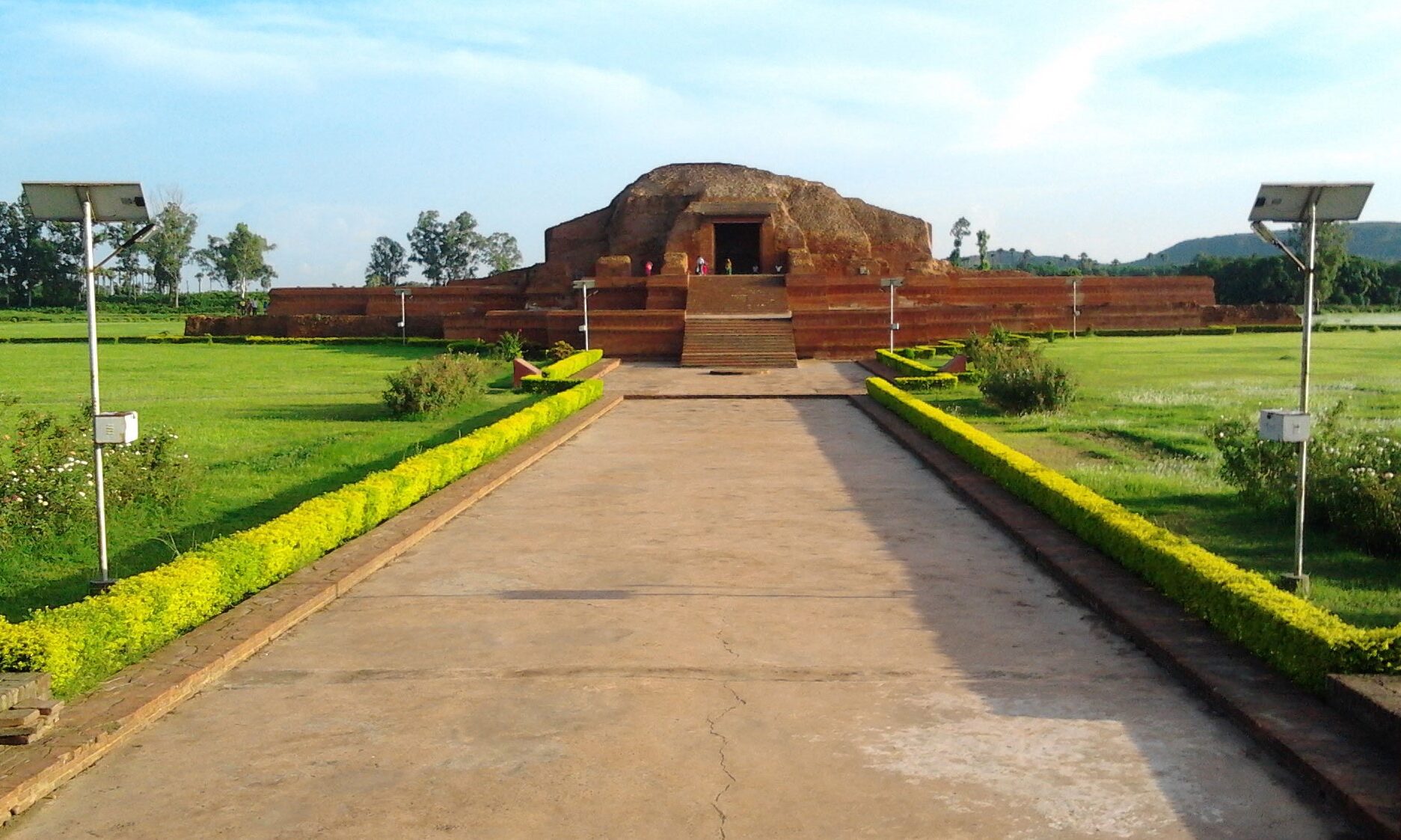The Golgong or Colganj rock cut Temples are one of the main tourist attractions of Bhagalpur. The rock cut carvings present on these temples date back to the Gupta Period. These carvings depict many Hindu, Jain and Buddhist deities. There are also several artistic etchings present at these temples that have been excavated from towns like Sultanganj and Kahalgaon of Bihar.

The origin of the Colganj Rock Cut Temples dates back to the Gupta period and is said to be built between the 5th and 7th centuries. It is a cave fort like temple. The temple is an epitome of the rock-cut sculpture which is an art where the artists produce structures by cutting out solid rocks. The temple is famous for its stone carvings, which represent the Hindu, Jain and Buddhist deities. The temple is also famous for its beautiful engravings that have been unearthed from Sultanganj and Kahalgaon. these artistic etchings leave the visitors in awe and belong to the period when King Ashoka ruled. The famous temples of Chaitya and Vihara are also located in the complex of Colganj Rock Cut Temples.
 Tourists from different states and foreign countries visit the temple on a huge scale to witness the exceptionally renowned and lovely shake cut carvings. These striking rock carvings sanctuaries of Colganj in Bhagalpur are the stunning bit of work that depicts the convention and culture of the then time and its kin. The stone cut carvings of Bhagalpur are fundamental to the divine beings and goddess which these individuals use to revere.
Tourists from different states and foreign countries visit the temple on a huge scale to witness the exceptionally renowned and lovely shake cut carvings. These striking rock carvings sanctuaries of Colganj in Bhagalpur are the stunning bit of work that depicts the convention and culture of the then time and its kin. The stone cut carvings of Bhagalpur are fundamental to the divine beings and goddess which these individuals use to revere.
One must visit The Colganj Rock Cut Temples to see this great architectural marvel. The intricate carvings and the stories associated with them fascinate the visitors. The sanctifying presence of the deities make this temple an oasis of spirituality and sacredness. Its a must visit place for the history buffs as the temple complex is a historical destination. The complex design of these stone cut sanctuaries have likewise pulled in numerous archaeological landmark specialists from India and abroad to consider and comprehend the craft of shake cutting which was advanced in the ancient India. 
The rock-cut sculpture is an art which is more similar to sculpture than architecture, as structures by the artists were produced by cutting out solid rocks.These etchings are said to belong to time of great Emperor Asoka. Rock-cut architecture is widely found in India in the ancient temples or caves. Some well-known rock-cut structures of ancient India are Chaityas, Viharas, temples etc. Rock-cut architecture occupies a very important place in the history of Indian state Bihar.
Colganj Rock Cut Temples are situated 8 km from Sultanganj, in Bhagalpur, in the state of Bihar. The place is well connected by a road network and national highways.
 Colganj Rock Cut Temples require no introduction. This temple complex is a historical destination dating back to Gupta Period. The different carvings related to Hinduism, Jainism, and Buddhism can be traced in the temple complex. Tourists from different states and foreign countries visit Colganj Rock Cut Temples on a huge scale.
Colganj Rock Cut Temples require no introduction. This temple complex is a historical destination dating back to Gupta Period. The different carvings related to Hinduism, Jainism, and Buddhism can be traced in the temple complex. Tourists from different states and foreign countries visit Colganj Rock Cut Temples on a huge scale.
 The Rock temples are located in Bhagalpur, 8 km away from Sultanganj. The monument is funded by Archaeological Survey of India (ASI).
The Rock temples are located in Bhagalpur, 8 km away from Sultanganj. The monument is funded by Archaeological Survey of India (ASI).
How To Reach There
The place is well connected by a road network and national highways. Bhagalpur railway station is the nearest railway station to the temple. It is located at a distance 33 kms from Bhagalpur City and 8 km from Sultanganj.
It is advised to carry extra water and food because there are no hygienic resources for water and food available there.
Best Time To Visit
Timing: 7. 00 AM – 7. 00 PM on all days of the week.
There is no entry fee.
People ideally spend 1 to 2 hours at the Colganj Rock Cut Temples offering prayers to the revered deities and seeking their blessings. It is suggested to visit the temple during the months of October to March as it is the best time for exploring the historical temple complex. The cool weather makes it feasible for all to explore the temple premises without a hassle.






















